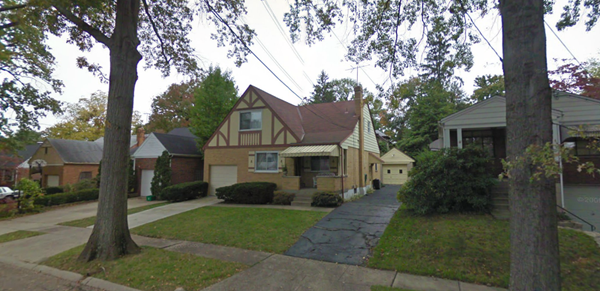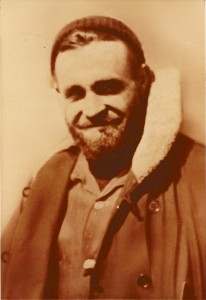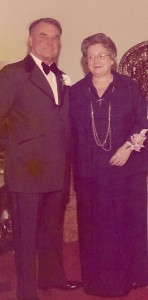
People grow up and grow old, and if they have children, those offspring will likely see the day when their grandparents and parents die and are laid to rest. And then those offspring have kids of their own, and the cycle continues. That’s the natural order of things, and if that natural order is somehow disrupted – say, if a parent buries a child – then something has gone terribly wrong. But under normal circumstances, we’ll live long enough to see our elders grow old and reach the twilight of their lives. First our grandparents, and then eventually our parents. In the back of our heads we know it’s coming, and that it’s how the world is supposed to work. Like clockwork.
At least that’s what I keep telling myself, but somehow that never makes it any easier when it becomes apparent that somebody who has always been a part of your life won’t be part of it forever.
My first grandparent to die was my paternal grandmother, when I was in middle school. She had been in poor health for many years due to diabetes and heart disease, and it didn’t come as much of a surprise when her ailments finally became more than her body could handle. My next grandparent to pass on was my material grandfather a couple years later, due to leukemia. A couple years after that, it was my paternal grandfather. He died of a rare form of cancer in his muscles, probably related to his working in a steel foundry in rural England as a child. God knows what he was exposed to in that place.
Both my grandfathers lived into their 80’s, and I figure once you live that long, you’re pretty much on borrowed time. If ailment X doesn’t get you, then ailment Y is lurking right around the corner. This isn’t to trivialize their passing or make light of the mourning felt by those they left behind, but they both lived long, full lives, had relatively short illnesses, died peacefully surrounded by people who loved them, and left the world a better place than they had found it. We should all hope for so much.
That leaves my maternal grandmother as the last surviving member of that generation in my family. Technically, she’s my step-grandmother, as my true material grandmother died of complications from breast cancer at an early age, years before I was born. My mother’s father remarried, and my mother’s stepmother would become, for all practical purposes, my grandmother.
Like the Energizer Bunny, she simply refuses to stop living. Now 86 years old, she’s still sharp as a tack, and as sweet and good-natured as ever. Always quick with a laugh or a compliment, she vaguely reminds me of “Granny” from the Looney Tunes cartoons: endearing and motherly on the outside, and tough as nails on the inside. She’ll always be there to offer you a bowl of ice cream, but don’t you dare try to reach into the birdcage and grab Tweety. I’ve never once seen her raise her voice, but even as kids, we knew that misbehaving in her house simply wasn’t an option.
And what a house it was. My earliest memories are of a simple split-level ranch house in Milford, but for the past 20-some years she’s been living in a little yellow house in the Cincinnati neighborhood of Madisonville, just a block from the Mariemont municipal boundary. More significant than the house itself, though, were the things it contained. My late material grandfather built and restored old clocks as a hobby, and the place is loaded with them. Floor-standing grandfather clocks, wall clocks, clocks that sit on shelves, you name it. They were all in impeccable condition. In the basement was his workshop, loaded with woodworking tools and all the clock-related spare parts you could imagine. And given that this was the German side of my family, everything was impeccably organized and labeled. A little drawer full of clock gears here, and another little drawer full of clock hands there. Craft was a strong tradition on that side of the family; my grandfather Monte Hillerich was the grandson of Bud Hillerich of Hillerich & Bradsby fame, the family-owned company that continues to make Louisville Slugger baseball bats a few miles downriver from Cincinnati.
On Saturday afternoons, he’d go around the house and wind up the clocks for the week. He deliberately kept them unsynchronized by a few minutes so that the entire house wouldn’t erupt into a cacophony of chimes every hour, on the hour. But beginning at around five minutes before the hour, a clock on the wall would chime. A few seconds later, a grandfather clock in the other room. Then another clock out in the hallway. This would continue for roughly ten minutes. Each clock had a sound that was as unique as its visual appearance. The chimes on the grandfather clock in the living room had a deeper, subtle pitch, while the little brass clock that sat under a glass dome on a nearby shelf had a more metallic, high-pitched chime.
In addition to the clocks were the antique furniture, family heirlooms, chinaware, photographs, artwork, and various other knickknacks. The house was like a museum for my maternal side of the family. Like the clocks, everything was kept impeccably clean and orderly.
The house — first out in Milford and then in Madisonville — always seemed like a refuge when I was growing up. Most family gatherings were at the house of my paternal grandparents in Fort Thomas, mainly because it was much closer to us, and such gatherings were usually pretty chaotic affairs with aunts and uncles talking, and small kids running around.
Visiting Grandma Hillerich’s house, though, was always a special occasion. The drive was a bit longer and involved crossing a large bridge, and the house was much more calm and orderly than anything on the Kentucky side of the river. I have fond memories of quietly playing with Tinker Toys in front of the fireplace in the family room while the adults carried on adult conversations nearby. All the clocks on the walls and my grandfather’s meticulous workshop in the basement were a constant source of fascination. Before we got into the car to head back home, my grandmother would always prepare a “goody bag” for me and my siblings, a small sandwich bag filled with a few candies and treats for each of us.
In 1988, while we were living in coastal South Carolina and Hurricane Hugo was threatening to wipe the state off the map, we evacuated to Cincinnati and stayed with my maternal grandparents for a few days. I remember watching the live reports on CNN from the house’s family room as Hugo battered the hell out of Charleston. My grandfather was already sick with leukemia at that time, and it would be the last time I saw him.
My grandmother, now a widow for the second time, had the house to herself and did her best to take care of it. Family members and neighbors helped her out, and she remained active in her little church just up the street on Plainville Road. I continued my nomadic lifestyle of moving around to various locations throughout the country, but tried to visit my grandmother whenever I found myself back in Cincinnati. She was as spry as ever, and the house itself hardly changed. It still felt like a place of refuge, the one remaining element of my childhood in Cincinnati that had been a constant throughout my life, no matter where I was living or what sort of trouble I was getting myself into. Grandma would always be there to welcome me into the home, remark about how tall I’ve gotten, ask me why I’m still single, and catch up with all that’s happening in my life. The clocks would chime, and like always, she wouldn’t let me escape the house without giving me some sort of treat to take home with me. On some level I hoped that, for as long as I lived, I could always come back here and find Grandma Hillerich among all the clocks, ready to give me a hug and a goody bag.
But that’s not how it works. A couple months ago she took a nasty fall at church and broke her arm. She wasn’t seriously injured, but the incident prompted the decision to move her into an assisted living facility out in the suburbs, closer to some relatives. The house, which had been a place of refuge throughout my life, is now being slowly emptied of its contents, and will soon be put on the market. I understand all the clocks, save for the large grandfather clock in the living room, have now been sold off.
I paid one final visit to the house a few weeks ago with my mother. The clocks had been appraised, and were lying on tables with little price tags attached to them. The house’s other contents were being divvied up among the relatives, and the place had the look of a garage sale. The walls that had once held clocks and family photos were now mostly empty. The house, which I had always known as being full of laughter, now felt like a silent, empty shell. That last remaining spatial connection to my childhood is now gone.
I always knew there would come a day when that house would no longer be there for me, and I knew it would be painful. But I didn’t know it would hurt quite so much.










